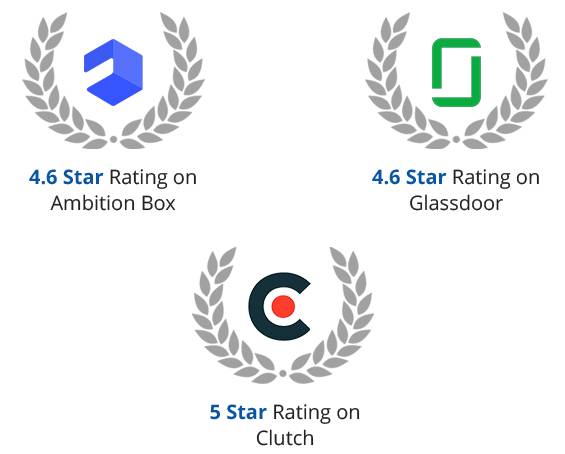Summary of the Article
Have a project in mind?
Schedule a CallHow Much Does It Cost to Hire Software Developers in the US? [2025 Edition]
Summary of the Article
In today’s digital economy, software developers aren’t just code writers — they’re architects of innovation, scalability, and business growth. But hiring the right developer isn’t just about “how much it costs.” It’s about what that cost means for your product, your timeline, and your long-term ROI.
💡 Most businesses don’t overspend on software developers. They underthink the strategy—and pay for it later.
Whether you’re a founder preparing for an MVP, an enterprise scaling your stack, or an SMB aiming to modernize internal tools, the cost to hire software developers in the US can vary wildly — from $40/hour to well over $200/hour depending on what (and who) you need.
This guide breaks through the noise. We’re not just giving you a price list — we’re giving you decision-making clarity.
By the end of this article, you’ll have a clear understanding of the key factors that influence developer costs within the US market — from the type of talent you hire to where they’re located and the scope of your project. You’ll also learn to spot the hidden or indirect expenses that often get overlooked, such as recruitment costs, onboarding time, and long-term maintenance.
Most importantly, you’ll gain the clarity needed to choose between hiring freelancers, building an in-house team, or partnering with a software development company in USA — based on your goals, timeline, and budget. This guide is designed to help you maximize ROI from your software development services without compromising on quality or scalability.
What Really Affects the Cost to Hire Software Developers in the US
When you’re budgeting for software development, the cost isn’t just about an hourly rate. It’s about what you’re building, who you’re working with, and how the work gets done. Here’s what actually moves the needle:
1. Who You Hire: Freelancer, In-House, or Software Development Company
Freelancers can be budget-friendly up front, but come with trade-offs — availability, reliability, and how well they fit into a larger team.
In-house developers offer more control and consistency, but they’re expensive. Think beyond the salary: benefits, workspace, tools, and onboarding all add up.
A US-based software development company brings a full team — developers, project managers, QA — all aligned and ready to go. You’re paying more per hour, but you’re getting structure, speed, and accountability.
Quick Tip:
If your project needs more than just code — like user experience, scalability, or ongoing support — a development company often gives you better long-term value.
2. Skill Level and Specialization
Rates go up with experience — and for good reason. Junior developers might save you money per hour, but they usually take longer and need more oversight. Mid-level and senior devs move faster and make fewer mistakes, which often means lower total cost over the life of a project.
Need specialized skills — AI/ML, cloud infrastructure, cybersecurity? Those developers are in high demand, and their rates reflect it. But so does their impact.
You’re not paying for someone’s time. You’re paying for what they can actually get done.
3. Location Still Matters – Even in a Remote-First World
US-based developers in cities like San Francisco or New York tend to charge top dollar. In places like Austin, Denver, or Atlanta, you’ll often find equally strong talent at more competitive rates. And remote US developers? They give you access to great skills without location-based pricing pressure — or time zone headaches.
4. The Nature of the Work
A small MVP costs a lot less than a complex, enterprise-grade system. Urgent timelines, high-risk industries (like healthcare or finance), and large-scale builds usually mean senior devs, QA, architecture work, and more — which all affects cost.
If you’re building something that needs to last, expect to invest in clean code, good planning, and strong testing. It’s worth it.
Hiring Model Comparison Table: Freelancers vs. In-House vs. Software Development Company in USA

What You Can Expect to Pay in 2025
Let’s talk numbers — the kind that help you plan with confidence, not just guesswork. Whether you’re exploring a small MVP build or hiring for long-term product development, it helps to understand where the market stands right now.
What US Developers Are Charging in 2025
Rates vary depending on experience, location, and role. Here’s a snapshot of what you can expect across different types of developers:

Note: These figures reflect US-based talent — from high-demand metros like SF and NYC to remote talent across the Midwest and South. Coastal cities typically drive higher costs, while distributed teams often offer better value.
What a Project Might Actually Cost You
Here’s how those numbers translate to real-world budget planning. Imagine you’re hiring for a 3-month development project:

Quick Insight: A development company might cost more per hour, but they often deliver faster, more reliably, and with built-in team support — which lowers your risk and shortens your launch timeline.
What’s Driving Rates in 2025
The market’s always shifting, but here’s what we’re seeing now:
- AI/ML roles are pushing into premium territory — demand is outpacing supply.
- Remote US developers are in high demand — offering quality without big-city price tags.
- Software development companies in the USA are increasingly favored by startups and enterprises alike for offering scalable, all-in-one solutions.
You’re not hiring a developer. You’re hiring a delivery system for your product.
Not sure which model fits your project? Let’s talk
Hidden & Indirect Costs Most Businesses Miss
If you’re only budgeting for salaries or hourly rates, you’re missing the bigger picture. The true cost of hiring a software developer — or any dev team — goes well beyond what’s written in a contract.
These are the quiet costs that don’t show up on invoices, but still eat into your budget, timeline, and sanity.
Recruitment & Ramp-Up Time
Hiring takes time — and time costs money. Whether it’s internal HR or an external recruiter, you’re spending on ads, interviews, background checks, onboarding, and admin. And once you find someone, they don’t hit full productivity on day one.
Expect to spend 4–8 weeks just getting a new in-house dev up to speed — that’s time your product isn’t moving.
Communication Overhead
Managing freelancers or junior devs without a project manager? That means someone on your team becomes the PM — often without realizing it.
Meetings, handoffs, miscommunications, rework — it all adds up. A cheaper hire can end up costing more if you’re constantly filling in the gaps they leave behind.
Tech Debt from Rushed or Low-Quality Work
Cheap code today becomes expensive code tomorrow. If you don’t invest in clean architecture, documentation, and testing upfront, you’ll pay for it in maintenance, bugs, and lost time later.
“You can pay a little more for code that lasts — or pay a lot more to fix it later.”
Tooling, Infrastructure, and Admin
Hiring in-house? Don’t forget software licenses, cloud credits, dev tools, laptops, and office space (if hybrid or on-site). Even small things — Slack, Jira, Figma — add recurring costs.
A full-time developer can bring $5,000–$20,000 in annual tooling overhead — and that’s before benefits.
The Cost of Delays
Missed deadlines, incomplete specs, unclear ownership — each delay snowballs. Every extra week can mean more budget burned, momentum lost, or customers left waiting.
That’s why many businesses choose a software development company in the USA — not just for coding, but for predictability and delivery.
Choosing the Right Hiring Model for Your Business Goals
There’s no universal “best” way to hire software developers — but there is a best choice for your goals, your budget, and your internal capabilities.
Whether you’re building fast, scaling slow, or aiming for stability, here’s how to choose the model that fits:
Freelancers
When it works:
You’ve got a small project, clear specs, and don’t need a long-term relationship.
Freelancers are easy to find and often budget-friendly. But they’re not a plug-and-play solution for every scenario. You’ll need to manage them closely, and availability can be an issue — especially if they’re juggling multiple clients.
✅Go this route if:
- You’re building a prototype
- You just need one specific skill for a short time
- You’ve got someone in-house managing the rest
❌But think twice if:
- The project’s complex or high-stakes
- You don’t want to play project manager
- You need team-level collaboration or continuity
In-House Developers
When it works:
You’re building a long-term product that’s core to your business.
An in-house team gives you more control, faster internal communication, and cultural alignment. It’s a long-game investment — which also means longer hiring cycles, higher overhead, and the pressure to retain talent over time.
✅Go this route if:
- You need someone thinking about your product full-time, long-term
- You can afford to wait a few months to hire the right person
- You’ve got strong leadership and infrastructure in place
❌Avoid this if:
- You’re under pressure to launch quickly
- You can’t afford the cost of slow onboarding or staff churn
- You’re only building once (not running a product long-term)
Software Development Company (USA-Based)
When it works:
You need a team that can move fast, work together, and actually deliver.
Hiring a dev agency gives you a ready-built team — developers, project managers, QA, and designers all working in sync. It’s a higher hourly rate than a freelancer, sure. But what you’re really paying for is momentum, process, and accountability.
✅Go this route if:
- You want a team that’s already done this before
- You don’t have time to build and manage people yourself
- You want to launch quickly without sacrificing quality
❌Skip this if:
- You’re trying to build a permanent internal team
- You’re looking for full-time staff to stay in-house long term
The right hire isn’t about cost alone — it’s about alignment. What kind of support do you need? What can your current team handle? How important is speed, scalability, or ownership?
Make the decision that supports the outcome you’re chasing — not just the one that looks cheapest on paper.
How to Actually Budget for Software Development – Without Burning Money
Most businesses don’t overspend on software development because they write big checks. They overspend because they miss what actually drives cost — and value.
Here’s how to build a smart, usable dev budget that helps you move fast, avoid rework, and actually get a return.
Step 1: Budget by Milestone, Not One Big Number
Forget the lump-sum guesswork. Your dev spend should follow your product’s life cycle:

If you’re not budgeting for post-launch, you’re not budgeting for reality.
Step 2: Know What You’re Not Seeing in Quotes
You’ll hear: “Our hourly rate is $75.”
But what that doesn’t include is often what hurts the most:
- Time lost to vague specs or unclear ownership
- Missed handoffs between devs and designers
- Surprise infrastructure costs (AWS, DB management)
- QA that’s “good enough” until it breaks in production
Ask up front:
“Who handles project management, testing, and DevOps — and is that baked into the price?”
Step 3: Budget for the Team You Actually Need
Don’t just budget for a dev. Budget for a product delivery team. That likely means:
- 1–2 Developers (Frontend, Backend, or Full-Stack)
- 1 Project Manager or Tech Lead
- 1 QA Tester or Automation Specialist
- Designer (if you don’t already have UX/UI covered)
A good software development company in the USA will offer this as a package — so you’re paying for outcomes, not just bodies on Zoom calls.
Step 4: Match Budget to Business Risk
High-risk product? Fund it properly. Just validating an idea? Keep it lean.
🎯 Example:
Spending $50k to build a product your sales team needs this quarter is very different than spending $50k on an MVP no one’s seen yet.
Budget based on consequences, not just ambition.
Real Business Scenarios – What Smart vs. Costly Hiring Looks Like
Numbers are useful. But stories make the lesson stick. Here’s a look at what happens when companies make the right call — and what happens when they don’t.
Smart Hire: Scaling Fast with a US-Based Dev Team
The Situation:
A healthtech startup needed to move fast on their MVP to secure follow-on funding. Their internal founder team had the vision, but no dev resources.
What They Did:
They partnered with a software development company in the USA that offered a project manager, a frontend/backend duo, and built-in QA. The company handled sprint planning, testing, and deployment while the founders focused on pitch prep and customer outreach.
The Result:
MVP launched in 10 weeks. They closed their seed round 6 weeks later. And they kept the same dev partner for Phase 2.
Why it worked:
They didn’t waste time assembling a team or managing tasks — they paid for execution and speed.
Costly Miss: Cheap Freelancers, Expensive Fixes
The Situation:
A retail brand wanted a basic mobile app for loyalty points. They hired a pair of offshore freelancers at a super low rate.
What Happened:
Deadlines slipped. The app lacked basic security. No documentation. The freelancers ghosted before handoff. Another dev team had to reverse-engineer the whole thing — which cost twice the original budget.
The Real Cost:
6 months lost. Customer trust damaged. Internal team burned out. Total spend: 2.5x more than planned.
Why it failed:
They budgeted for the build, not for the result.
Gray Area: In-House, But Understaffed
The Situation:
A mid-sized SaaS company decided to build a new internal tool with their in-house team. They assigned one dev and one designer.
What Happened:
Progress was slow. Internal deadlines slipped. Leadership got frustrated. The team was competent — just spread too thin. Eventually, they brought in a part-time PM and contractor to help wrap it up.
Takeaway:
In-house talent is great — but not if they’re working at 50% capacity across three projects.
It’s not about how much you spend — it’s about whether your team can deliver. On time. At quality. Without burning out.
Final Take
The cost to hire software developers in the US isn’t just about money — it’s about momentum, capability, and whether your project gets delivered the way you imagined it.
If there’s one thing to take away from this guide, it’s this: smart hiring is about alignment. When you choose the right developer or team — one that fits your timeline, goals, and technical needs — you’re not just buying code. You’re buying progress. You’re investing in fewer delays, fewer rebuilds, and better outcomes.
And whether you’re a startup founder building your first MVP, or a product leader trying to scale a complex platform, the smartest budget is the one that plans for the full journey — not just the build phase.
The real advantage? It’s not always about spending more. It’s about spending better.
Podcast: A Complete Guide to Hiring Software Developers in the US

In this episode, we break down what really drives the cost of hiring software developers in the US—from hourly rates and skill levels to hidden costs and hiring models.
Whether you’re building fast or scaling smart, we’ll help you budget better and hire with clarity.
Ready to Hire Smarter?
Looking to hire software developers without the guesswork?
As a proven software development company in USA, we deliver custom, high-impact software development services that move your product forward — fast.
Let’s talk. Contact us and build something great together.










